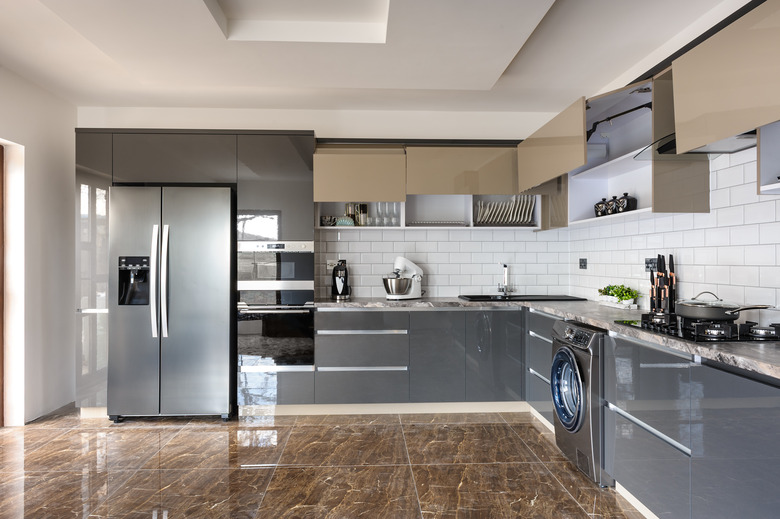GE Adora Refrigerator Problems
The GE Adora refrigerator is one of the Adora series of GE appliances, including the GE Adora dryer, that carries the ENERGY STAR® logo. As a program of the U.S. Environmental Protection Agency, ENERGY STAR promotes products that exhibit superior energy efficiency. But even energy-efficient appliances like the GE Adora refrigerator may experience performance problems from time to time. Many of these hiccups, however, can be adjusted or fixed with minimal effort and technical know-how.
GE Adora Refrigerator Troubleshooting
GE Adora Refrigerator Troubleshooting
Among other problems, if your appliance is not properly cooling or making ice, using some common GE refrigerator troubleshooting tips may help you diagnose and resolve the issue. If you hit a snag, or if the problem requires an experienced refrigerator technician, you can always call GE appliance support at 1-800-626-2005 or 1-800-432-2737 to schedule a service call.
GE Adora Refrigerator Not Cooling
GE Adora Refrigerator Not Cooling
If your refrigerator is plugged in and running, but it's not properly cooling, check these possible reasons:
- Temperature control settings. Whether you have a
dial control or digital setting, adjust the temperature control by setting it
one number cooler. If you have an actual temperature readout model, lower the
temperature by 1 degree Fahrenheit at a time. Wait 24 hours before lowering the setting again,
if needed. - Doors. Make sure the doors to the
refrigerator and freezer tightly close. If an oversized box or other item is preventing
the door from closing, warm air from your kitchen can flow into the
refrigerator and keep it from properly cooling. And even if the doors close all
the way, large containers in the back of your fridge can block cold air from
circulating, which prevents proper cooling. - Air clearance. Generally, your refrigerator
should have 1 inch of clearance on both sides and at the top and back to ensure
proper cooling. You may need to pull your fridge away from the wall or move
anything that is leaning against either side and restricting its operation.
GE Refrigerator Ice Maker Troubleshooting
GE Refrigerator Ice Maker Troubleshooting
The GE Adora refrigerator has a Cap Touch control with ice button and dual ice maker option. First, make sure the ice maker is turned on by touching the "Ice Maker" button, which you'll find on the control panel's left side underneath the "Freezer" setting. The status of the ice maker will display to the right of where you see the words "Ice Maker." If you need to change the status, keep touching the "Ice Maker" button until the correct status is displayed.
For maximum ice production, set the temperature at 0 degrees F. If you need to adjust the current temperature, adjust by 1 degree every 24 hours until the freezer reaches 0 degrees.
Error, Fault and Function Codes
Error, Fault and Function Codes
If a refrigerator detects a failure, then a green error, fault or function code will flash on the control panel's display, and a beeping noise will sound. Some codes cannot be cleared and resolved without the expertise of a certified GE refrigerator technician. But you'll be able to clear some of the codes.
First, disconnect the power to the refrigerator for 30 seconds. When you restore the power, the code may have cleared on its own. If it doesn't, check these common fault codes:
- FF. Frozen food may be thawing because the freezer temperature
is set too high. - PF. The power source to the refrigerator is interrupted or
disconnected. - CC. The temperature controls are not properly set.
Normal Display Codes
Normal Display Codes
If you see these codes on the refrigerator's control panel display, they do not indicate errors; they're normal:
- tC. This may also look like EC, an upside-down F followed by C or another similar construction. This code simply indicates the Turbo Cool (tC) setting.
- tF. This may also look like EF, an upside-down F followed by F or another similar construction. This code simply indicates the Turbo Freeze (tF) setting.
